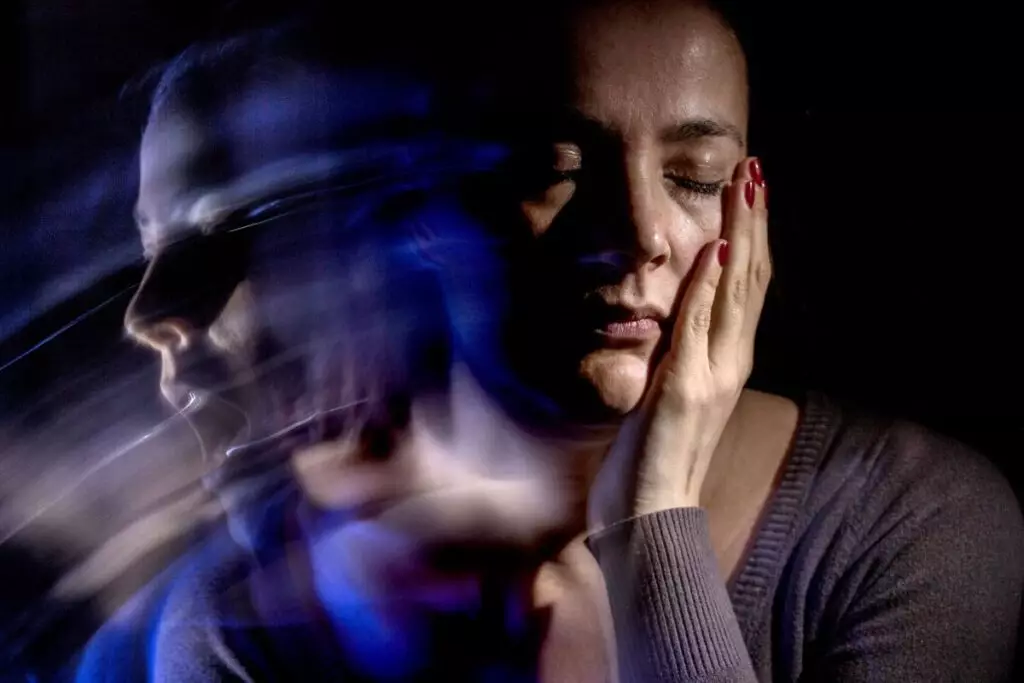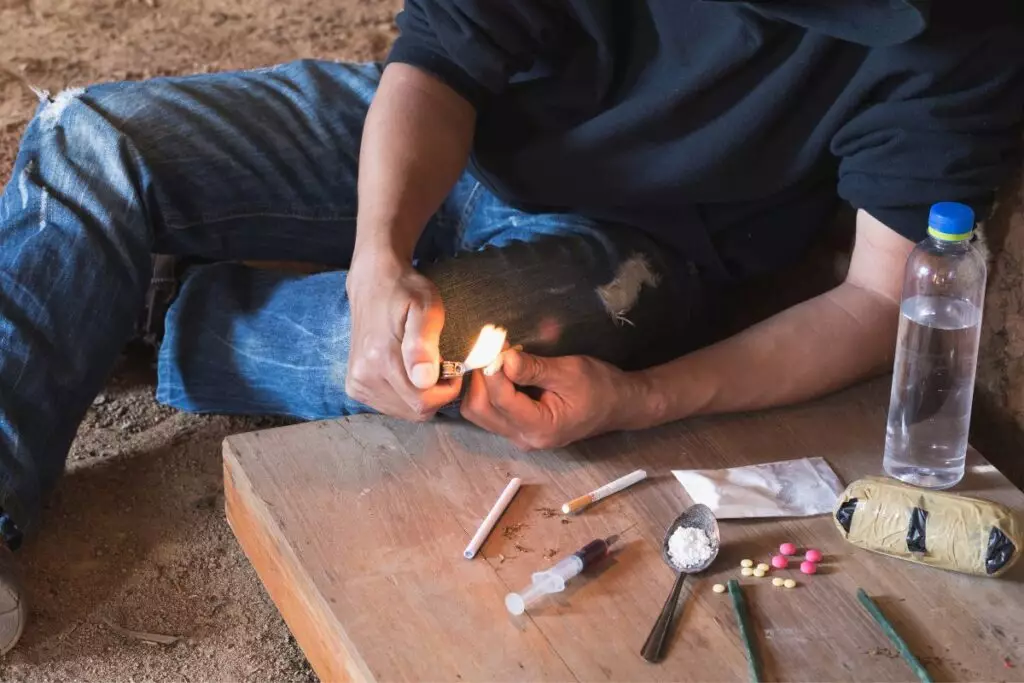Bipolar Disorder Treatment Center


Experiencing fluctuations in emotions is a common part of life. Each day presents new challenges and experiences, leading to shifts in feelings, sometimes even within a single day. Life’s unpredictability often tests one’s emotional resilience. While most people can manage these fluctuations without significant disruptions to their work and relationships, there are times when intense mood swings become overwhelming obstacles that interfere with daily life.
People with bipolar disorder experience intense mood swings that can cause them to act out in ways they normally wouldn’t. Bipolar disorder can disrupt daily life, strain relationships, and impact overall well-being. However, it’s important to know that effective treatment options are available for bipolar disorder.
At 1st Step Behavioral Health, our Florida bipolar disorder treatment program combines medication, therapy, and lifestyle management strategies to help individuals reclaim their lives from this condition.
What is Bipolar Disorder?
Bipolar disorder is a mental illness that causes intense shifts in one’s mood and ability to function. Individuals diagnosed with bipolar disorder experience very extreme and opposite emotions for a period of time in addition to normal ones. These episodes, as they are called, are broken down into depressive, hypomanic, and manic phases.
Depressive episodes are marked by low emotions and feelings of tremendous hopelessness. During a manic episode, people often feel high, very irritable, or in an excited state. Hypomania is still an elevated mood, but not quite as extreme as mania. In between these sudden shifts are periods of stable and leveled emotions.
Bipolar disorder is categorized into three main types, each characterized by distinct patterns of mood episodes.
- Bipolar I Disorder – This is the classic form of bipolar disorder and is defined by the presence of at least one manic episode lasting for at least one week. Manic episodes are characterized by a persistent and abnormally elevated mood, increased energy, reduced need for sleep, racing thoughts, and impulsive behavior. Depressive episodes may also occur, and they often alternate with manic episodes. Bipolar I Disorder can be highly disruptive to a person’s life and may require medication and therapy for management.
- Bipolar II Disorder – Bipolar II Disorder is characterized by a pattern of depressive episodes alternating with hypomanic episodes. Hypomanic episodes are similar to manic episodes but are less severe and do not typically cause significant impairment in daily functioning. While individuals with Bipolar II Disorder experience periods of elevated mood and increased energy, they usually do not exhibit the extreme behaviors seen in full manic episodes. This type of bipolar disorder is often misdiagnosed as depression due to the prominence of depressive symptoms.
- Cyclothymic Disorder – Cyclothymic Disorder is a milder form of bipolar disorder characterized by chronic fluctuations in mood involving numerous periods of hypomanic symptoms and depressive symptoms over a span of at least two years. These mood swings are less severe than those seen in Bipolar I and II Disorders but are persistent and can still impact a person’s daily life. Individuals with Cyclothymic Disorder do not experience full-blown manic or major depressive episodes.
Bipolar disorder carries a tremendous stigma as affected individuals are often branded as “crazy” or “psychotic.” However, the condition is entirely treatable and many go on to have productive lives.
People struggling with bipolar disorder usually have co-occurring disorders like addiction or anxiety. Therefore, it is important to seek a dual diagnosis for the best treatment method to yield optimal results.
Symptoms of Bipolar Disorder
Bipolar disorder is diagnosed based on distinct episodes:
- Manic Episode – Lasting at least one week, individuals experience heightened energy, reduced need for sleep, fast speech, distractibility, inflated self-esteem, and risky behaviors. These episodes are often noticeable and can disrupt daily life, sometimes requiring hospitalization. Typically, they begin around the age of 18.
- Hypomanic Episode – Similar to manic episodes but shorter (about four days) and less severe, allowing for better daily functioning.
- Depressive Episode – Lasting at least two weeks, it exhibits typical signs of depression, including extreme sadness, hopelessness, suicidal thoughts, low self-esteem, loss of interest, sleep and appetite changes, concentration difficulties, and slowed speech/actions.
Bipolar disorder is relatively uncommon in teenagers and children, usually emerging around age 25. It affects both genders equally, with an annual prevalence of 2.8% among adults in the United States. Bipolar disorder is often considered severe, with higher suicide rates compared to other mental illnesses.
Misdiagnosis such as schizophrenia or borderline personality disorder can occur in people with bipolar disorder. People with bipolar disorder are at higher risk of substance abuse during episodes, emphasizing the importance of early recognition and mental health treatment. Left untreated, the condition tends to worsen over time, leading to resistance to change.

Risk Factors for Bipolar Disorder
A risk factor is anything that increases the likelihood of getting an illness. In the case of bipolar disorder, the disease is genetic. 80-90 percent of individuals diagnosed with the disorder have a relative who has the disorder themselves or deals with extreme depression.
In regards to biochemistry, there are some small differences in the average size or activation of certain parts of the brain that are specific to people with bipolar disorder.
Environmental factors also play a huge role in developing the condition. Stressors in your surroundings and how you respond to them have a huge impact on your mental health. Intense stress, poor sleeping patterns, and substance abuse could trigger manic or depressive cycles.
Additionally, a highly painful situation, like the death of a loved one, the end of a relationship, the loss of a job, or illness, can bring about the onset of bipolar disorder.
Understanding the Relationship Between Bipolar Disorder and Substance Abuse
Individuals with bipolar disorder are at a higher risk of developing substance use disorders compared to the general population. Many individuals with bipolar disorder turn to drugs or alcohol as a means of self-medication.
During depressive episodes, substances may be used to alleviate feelings of sadness and hopelessness. Conversely, during manic episodes, individuals might seek to curb their heightened energy and impulsivity through substances. Unfortunately, this self-medicating approach can lead to increased substance abuse and further exacerbate mood instability.
On the other hand, substance abuse can trigger mood swings, intensifying the highs and lows experienced by individuals with bipolar disorder. This cycle of instability can make it difficult to differentiate between substance-induced symptoms and those arising from the disorder itself, complicating both diagnosis and treatment of the condition.
Addressing both bipolar disorder and substance abuse simultaneously is crucial for successful recovery.

Treatment for Bipolar Disorder
If you or someone you know is struggling with bipolar disorder, it is important to seek help sooner rather than later. The quicker you get the situation under your control, the sooner you can resume living a stable life with your feelings in check. There are many options out there for you, and you should speak to a psychiatrist or clinical psychologist as soon as possible.
Medication
Sometimes, medication by itself is enough to get someone on the right track. Medications such as mood stabilizers and antidepressants are often used to manage symptoms of bipolar disorder.
Usually, medication is paired with psychotherapy or talk therapy.
Psychotherapy
Talk therapy, or psychotherapy, plays a crucial role in the treatment of bipolar disorder by providing individuals with valuable insights, coping strategies, and support. While it can be a short-term intervention to gain clarity and address immediate issues, it also serves as a long-term resource for managing the complexities of this condition.
Talk therapy is a multifaceted approach that offers individuals with bipolar disorder a range of benefits, from immediate clarity and relationship repair to long-term strategies for managing their condition. Therapy may involve individual one-on-one sessions, group therapy, and family therapy.
Holistic Therapy
As with any condition, there are additional mental health treatments that can be done at home that are relatively cheap and effective. For example, regular exercise helps to stimulate blood flow and the release of hormones associated with positive emotions. Eating a properly balanced diet and having proper sleep patterns also help to maintain a healthy body and a stable mood. Finally, surrounding oneself with friends and family who can offer support and understanding combats the sense of isolation that comes with mental illness.
Get Help From Our Bipolar Disorder Treatment Program in Pompano Beach, FL
At 1st Step Behavioral Health, we take a holistic approach to bipolar disorder treatment, helping individuals improve all areas of their lives using individualized care. Learn more about your treatment options by speaking with a mental health specialist. You can contact us by dialing or texting (855) 425-4846.
